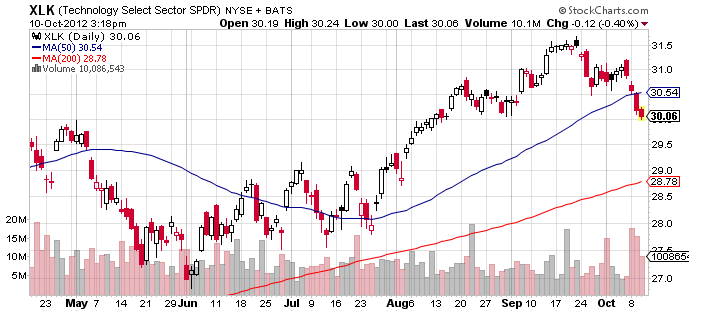 Author: Charles Sizemore
Author: Charles Sizemore
Covestor models: Sizemore Investment Letter and Tactical ETF, Strategic Growth Allocation
I read a fact this week that I never expected to read in my lifetime: “The Japanese government is expected to announce Wednesday that the country recorded its first annual trade deficit since 1980” (see “End of Era for Japan’s Exports”).
Trade deficit? Japan?
Japan’s economy has been a slow motion train wreck for the past 20 years. The bursting of the country’s 1980s credit, stock market, and real estate bubble would have wreaked more than enough havoc on any economy. But on top of the normal debt deflation that would follow the bursting of a financial bubble, Japan also has the worst demographics of any developed country. Japan is aging rapidly, and its population is shrinking.
Most of the research on the effects of Japan’s demographics have focused on skilled labor shortages and pension funding. These are legitimate concerns, to be sure. But you don’t have to be an Ivy League economist to see that there is a much larger problem.
If you own a business—anything from a world-class automaker like Toyota (NYSE: TM) to a neighborhood corner café—you have a smaller pool of potential customers every year, and within that smaller pool a larger percentage are elderly consumers who buy less. Some companies grow at the expense of others, but it becomes a zero-sum game. Growth in the aggregate becomes impossible. The math simply doesn’t add up.
Unless, of course, you export. And this is what Japan has been quite adept at doing for the past 20 years. Until now.
In his 2011 book Endgame, New York Times best-selling author John Mauldin calls Japan a “bug in search of a windshield,” and it’s a great metaphor. Like a bug buzzing along a highway, Japan’s economy has bumbled along for the past two decades, not really growing but not imploding either. In the not-too-distant future, Japan may be in for a good “splat.”
Two things have kept Japan’s economy afloat all these years: its healthy trade surpluses and its government’s ability to borrow large sums of money at ridiculously low interest rates to fund enormous budget deficits. The high price of the yen and prolonged weakness in the United States and Europe are doing a fine job of denting exports. And soon, the low interest rates may be under attack.
Anyone reading this article is well aware of Europe’s debt woes. But Japan’s debts make Europe’s look like pocket change. Italy, the most indebted of the major Eurozone countries, started to see its market bond yields reach punitive levels when its debt-to-GDP ratio reached 120. As a comparison, Japan’s debt-to-GDP ratio is an almost unbelievable 220 percent (IMF).
The only reason that Japan hasn’t had a run on its bonds is that they are all by and large purchased by domestic buyers. As Mauldin explains it in Endgame, “94 percent of all JGBs have been bought by the Japanese.” But demographically, Japan is fast shifting from a nation of middle-aged workers saving for retirement to a nation of elderly retirees liquidating their savings to pay their bills. The savings rate has been in stark decline.
The domestic demand for Japanese bonds cannot last forever, and when it dries up Japan will find itself at the mercy of international banks and investors. Ask Greece and Italy how that worked out for them.
Japan can look forward to a currency and debt crisis that makes Europe’s look mild by comparison. Yet betting on Japan’s collapse is a little like fraternity hazing for macro hedge fund managers. It’s just a rite of passage that they have to go through. They short Japan’s bonds, lose a fortune, and learn a few painful lessons.
Knowing this, I’m not going to recommend you short the yen or Japanese stocks or bonds—yet. Wait until you see Japanese yields starting to creep up. And when they do, position your portfolio for the potential short of a lifetime.




